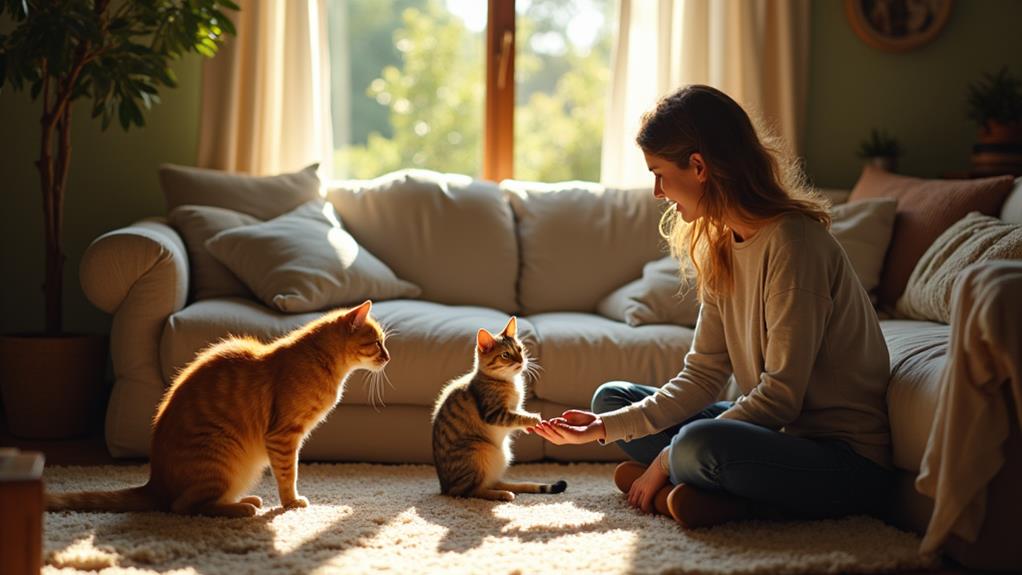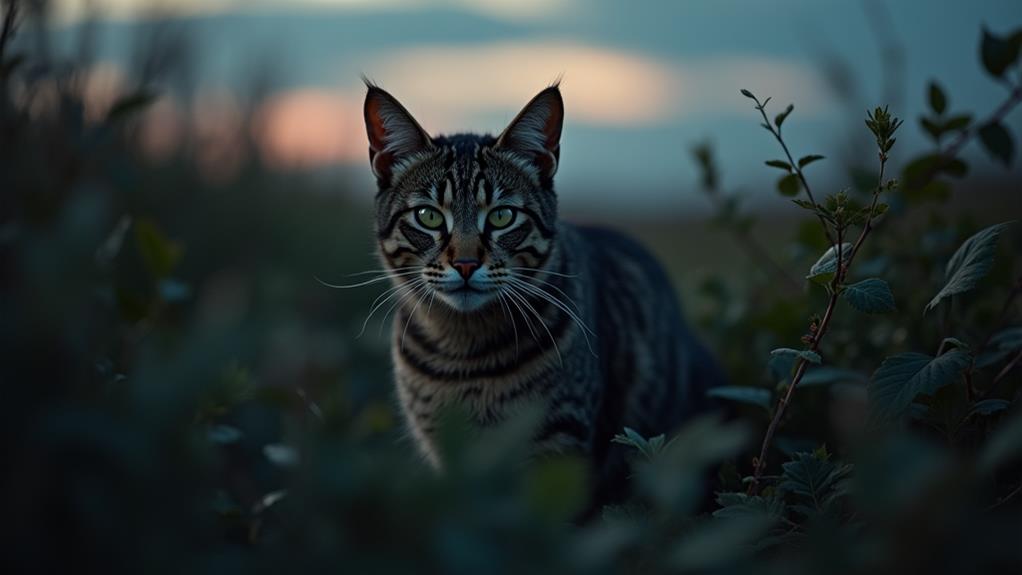How Long Does It Take for a Cat to Become Feral? Exploring the Timeline
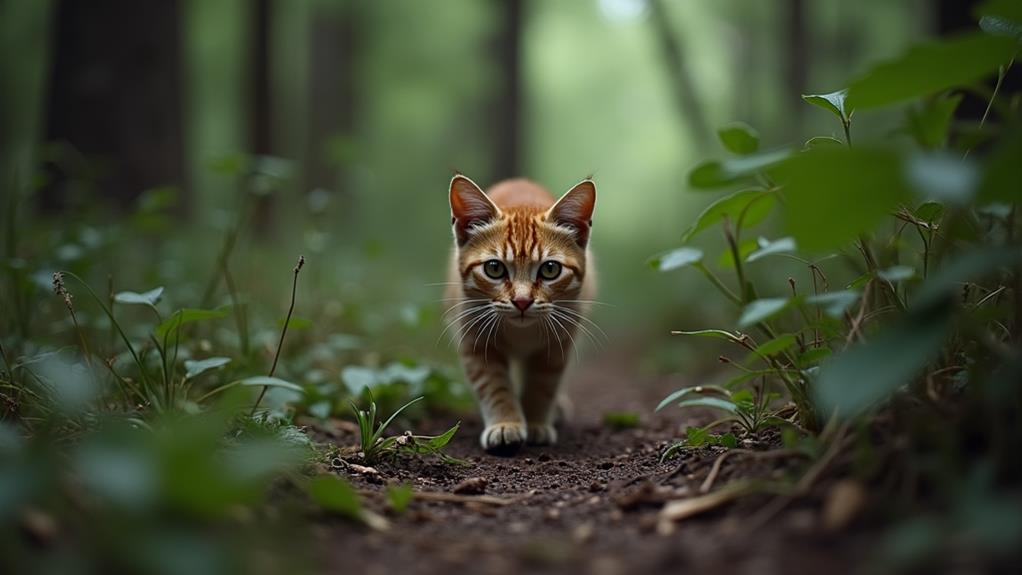
If you're wondering how long it takes for a cat to become feral, the timeline varies. Kittens can start showing feral behavior within weeks if they don't have human contact. Adult cats might take several months or even up to a year to fully convert. Factors like maturity, environment, and personality play significant roles. For instance, younger and more independent cats adapt faster to a feral lifestyle. Stress and the availability of resources also influence this change. Curious about the complexities and strategies involved in addressing feral cat conversions? There's much more to uncover about this fascinating process.
Understanding Feral Cats
Understanding feral cats involves recognizing the profound transformation from domesticated companions to independent survivors. Feral cats are fundamentally domestic cats that have reverted to a wild state, often born and raised without human contact. This lack of interaction results in behaviors finely tuned for outdoor living, setting them apart from stray cats, which might still seek human interaction. Feral cats are typically terrified of humans, a significant reason why they don't adapt well to indoor environments, making them challenging to socialize.
When observing feral kittens, you'll notice that their survival instincts kick in early, as they're taught to rely on the colony for food and shelter. Unlike domestic cats that thrive on human companionship, feral cats are experts at maneuvering their natural environments without any human assistance. You might find them forming colonies, which not only provides safety in numbers but also reinforces their learned behaviors critical for survival.
Understanding these behaviors and characteristics is important for effective management and care strategies. Knowing that feral cats are inherently different from their domestic counterparts helps you appreciate the complex nature of their existence and the specific needs they have for survival.
Differences From Stray Cats
A clear distinction exists between stray and feral cats, fundamentally rooted in their experiences with humans. A stray cat has previously lived with humans, which means it retains some level of socialization. You'll find that these cats might still be approachable and could potentially trust humans again with time and care. On the other hand, feral cats are usually born and raised without any contact with humans, making them unsocialized and naturally more fearful of people. Adult feral cats don't adapt well to becoming a pet cat, primarily because they've never had a reason to trust humans.
If a stray cat is left without assistance, it might evolve into a feral state. This change happens as the cat gradually loses its social behaviors, becoming more wary of humans over time. Stray cats, due to their prior human interactions, can often be re-socialized, whereas feral cats present a challenge. They're more difficult to approach and capture, indicating a significant behavioral difference. Understanding these differences is vital if you're aiming to implement effective management strategies and interventions. This knowledge guarantees you address the welfare needs of both stray and feral cats appropriately.
Timeline to Feral Behavior
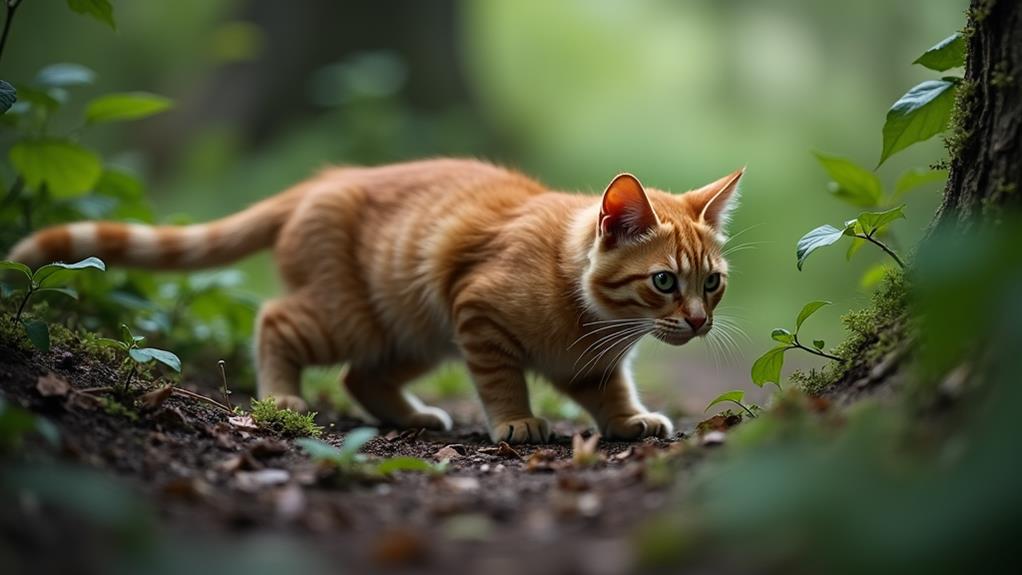
When considering how a cat shifts from being socialized to feral, time plays a significant role. The timeline for this change varies greatly between kittens and adult cats. Kittens, with their formative socializing period, can start displaying feral behavior within mere weeks if they're not exposed to consistent human interaction. In contrast, an adult domestic cat may require several months to fully adopt feral characteristics, with the timeline often stretching over a year.
For abandoned cats, the process from stray to feral involves an adaptation period. Initially, they might seek human help, but over 3-6 months, feral behaviors become more apparent. This change is often expedited by stress factors, like losing a home, pushing them towards a feral lifestyle more rapidly.
Individual personalities also matter. Cats with independent streaks will likely take on feral life quicker than those who are more bonded to humans. The timeline of this change is fluid, influenced by a cat's maturity and character. While kittens adapt swiftly due to their youthful malleability, adult cats take longer, needing time to shed their domestic behaviors and adopt new, feral ways. Understanding this timeline helps in managing and addressing feral cat populations effectively.
Influencing Factors
Several factors influence how quickly a cat becomes feral. Understanding these can help you predict the change process. Here are four key elements to take into account:
- Age: Kittens need only weeks to adapt to feral behavior if they lack physical contact with humans. In contrast, adult cats may take months. This is because early socialization is crucial; once the prime window for human interaction closes, feral behavior becomes more likely.
- Environmental Conditions: The surroundings play a huge role. Cats in urban areas, where they encounter humans regularly, can adapt faster to life as feral cats. These conditions push them to develop survival skills more rapidly.
- Food Sources: The availability of food heavily influences cat behavior. Cats with reliable food sources may not fully adapt to feral as quickly, since their survival isn't immediately threatened. On the other hand, scarce food sources can hasten the change.
- Personality Traits: Individual personality traits also matter. Independent cats usually adapt to feral life faster than those bonded to humans. They're more likely to adopt behaviors modeled by other feral cats, learning critical survival techniques swiftly.
Challenges of Feral Cats
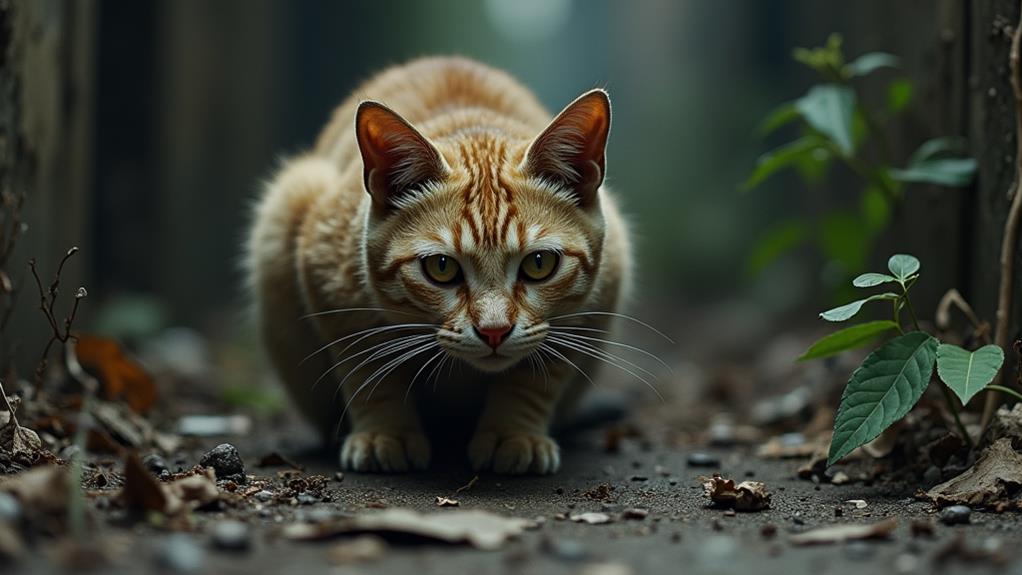
Feral cats face a range of challenges that make their lives difficult, despite their ability to adapt to the wild. As unsocialized outdoor creatures, they often fear humans, making them vastly different from domestic cats that are socialized to humans. This lack of socialization makes reversion back to domestic life nearly impossible. Despite this, feral cats thrive in outdoor environments, finding food and shelter by relying on their instincts. However, they still face numerous health risks. Without regular veterinary care, they can suffer from serious illnesses, which not only affect their well-being but also pose threats to humans and pets they may encounter.
Surviving as a feral cat means learning to navigate a world without the comfortable living conditions that domestic cats enjoy. While many feral cats lead long lives, their existence is often fraught with challenges. Misconceptions persist about their quality of life, but many do adapt well to their natural habitats, even without feeding stations provided by humans. It's crucial to recognize that attempting to domesticate feral cats isn't advisable; they don't adapt well to indoor environments. Understanding these challenges helps in providing better solutions and care for feral cat populations.
Socializing Feral Kittens
Successfully socializing feral kittens often hinges on early intervention and consistent, positive human interaction. Kittens under eight weeks of maturity are particularly receptive to socialization, as their adaptability is high. As they grow, especially past four months, their feral instincts strengthen, making taming more challenging. Early interactions play a significant role in building trust and guaranteeing their development progresses smoothly. Here's how you can effectively socialize feral kittens:
- Start Early: Aim to begin the socialization process before kittens reach eight weeks. This period is essential for setting the foundation for trust and adaptability.
- Gentle Handling: Regular, gentle handling helps feral kittens become accustomed to human touch. It's important in fostering trust and easing the shift from an outdoor feral life to a home environment.
- Consistent Feeding: Providing meals at regular times helps them associate humans with positive experiences, further supporting taming efforts.
- Avoid Premature Separation: Confirm kittens are weaned before separating them from their mothers to avoid developmental issues. Rushed separation can hinder their socialization potential.
Humane Colony Management
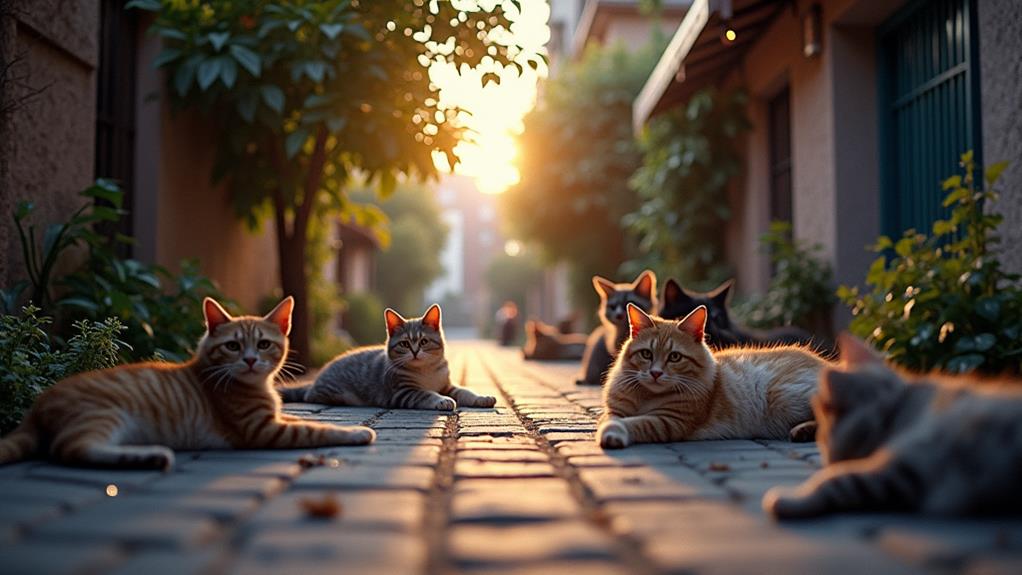
Effective humane colony management is fundamental for controlling feral cat populations and guaranteeing their well-being. You need to use humane traps to safely capture feral cats, allowing for spaying/neutering to prevent population growth. Regularly monitoring the area for new arrivals helps keep the colony manageable. It's imperative to act quickly and arrange for immediate veterinary care when new cats are spotted.
To maintain the health of the colony, establish consistent feeding schedules and minimize feeding locations. This not only supports the cats' health but also makes trapping more efficient. Engage with local veterinarians and humane societies for resources and advice. They can offer invaluable support and guidance for managing feral cat colonies effectively.
Community support plays a significant role in humane colony management. By collaborating with other caregivers, you guarantee consistent care and support for the cats. This teamwork improves the general welfare of the colony. Sharing responsibilities and strategies with fellow caregivers fosters a strong network of support.

